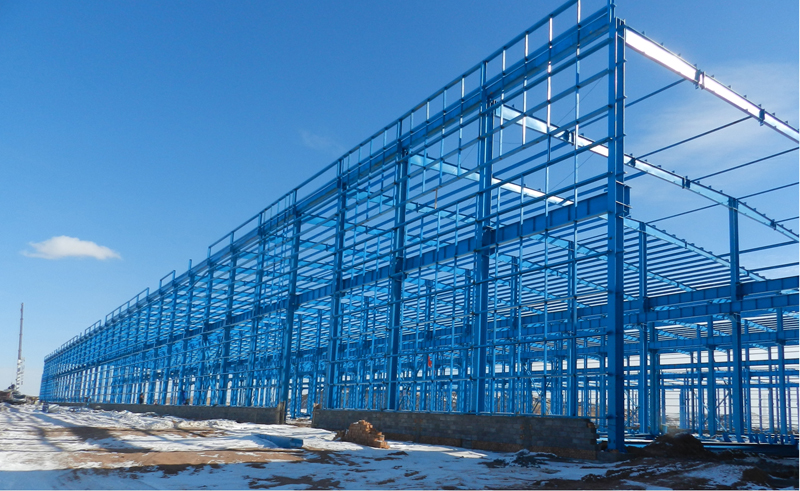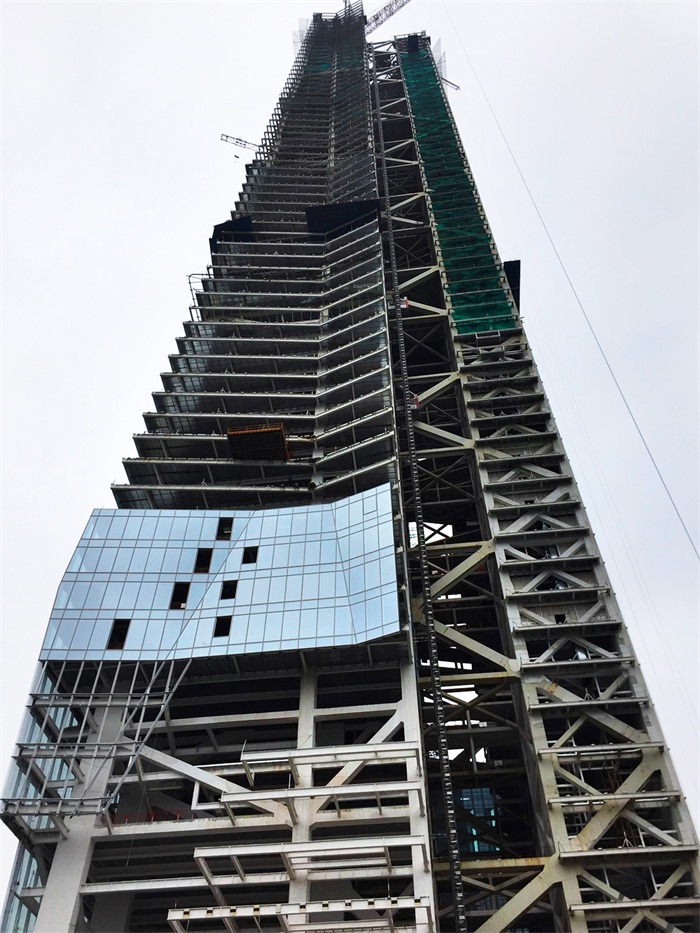Characteristics and Application of Steel Structure
- 10 Aug 2019
- steel structure
1. Compared with other materials, steel structures have the following characteristics:
1.1 Light weight of steel structure
Although the bulk density of steel is large, its strength is much higher than other building materials. Therefore, when the load and conditions are the same, the steel structure is lighter than other structures, easy to transport and install, and can span a larger span.
1.2 Good plasticity and toughness of steel
With good plasticity, steel structures will not break suddenly because of accidental overload or partial overload. Good toughness makes the steel structure more adaptable to dynamic loads. These properties of steel provide sufficient guarantee for the safety and reliability of steel structures.
1.3 Steel is closer to homogeneity and isotropy
The internal structure of steel is relatively homogeneous, very close to homogeneous and isotropic, and almost completely elastic within a certain range of stress. These performances are in good agreement with the assumptions in mechanical calculation, so the calculation results of steel structures are in good agreement with the actual stress conditions.
1.4 The steel structure is easy to be manufactured and industrialized, and the construction and installation period is short.
The steel structure is composed of various profiles and is easy to make. A large number of steel structures are manufactured in specialized metal structure factories with high accuracy. The components are assembled on site and bolted, and the structure is lighter, so the construction is convenient and the construction period is short. In addition, the built steel structure is also easy to disassemble, reinforce or transform.
1.5 Good sealing performance of steel structure
Steel structure has good air tightness and water tightness, so steel structure is mostly used in some plate and shell structures, such as high pressure vessels, large oil depots, gas cabinets, pipelines and so on.
1.6 Steel structure has good heat resistance but poor fire resistance.
It is well known that steel is heat resistant but not high temperature resistant. With the increase of temperature, the strength decreases. When there is radiation heat around, and the temperature is above 150, shielding measures should be taken. If a fire breaks out and the temperature of the structure reaches more than 500, it may all collapse instantaneously. In order to improve the fire resistance of steel structures, it is usually wrapped in concrete or bricks.
1.7 Steel is easy to rust, so protective measures should be taken.
Steel is easy to rust in wet environment, especially in the environment with corrosive medium. It must be painted or galvanized, and it should be maintained regularly during use. This makes the regular maintenance cost of steel structure higher than that of reinforced concrete structure.
In addition, steel structure is expensive, and steel is an important material for all sectors of the national economy. From the overall point of view, the application of steel structure in buildings is limited to a certain extent, and steel should be saved as much as possible in design. However, if the use of other building materials can not meet the requirements or economically, steel structure can be considered.
2. The reasonable application scope of steel structure includes the following aspects:
2.1 Long-span structure
It is used in the hall, gymnasium, exhibition hall, theatre, hangar, garage, etc. The main structural systems adopted are frame structure, arch structure, grid structure, suspension structure and prestressing steel structure.
2.2 Workshop structure
For example, the open hearth workshop, blooming workshop and mixer workshop of metallurgical plant, the steel casting workshop, hydraulic press workshop and forging workshop of heavy machinery plant, the berth workshop of shipyard, the assembly workshop of aircraft manufacturer, etc. The main load-bearing skeletons of these workshops are usually all or part of steel structures.
2.3 High rise building
For hotels, hotels, apartments, office buildings and other high-rise buildings.
2.4 Tower mast structure
Used for TV tower, microwave tower, high voltage transmission line tower, chemical exhaust tower, atmospheric monitoring tower, oil drilling tower, rocket launching tower and radio mast, etc.
2.5 Shell structure
Containers made of steel plates are widely used in metallurgical, petroleum and chemical enterprises, such as large liquid storage, gas storage, blast furnace, hot blast stove, etc.
2.6 Removable structure
It is used for assembly movable houses, temporary exhibition halls, etc.
2.7 Light steel structure
For small and medium-sized houses.

3. Difference between Heavy Steel and Light Steel
It is true that there is no unified standard for judging the structure of heavy and light steel. Many experienced designers or project managers can not fully explain it, but we can take some data into consideration and judge it.
3.1 Crane lifting weight of workshop: greater than or equal to 25 tons, which can be considered as heavy steel structure.
3.2 Steel consumption per square metre: greater than or equal to 50KG/㎡, which can be considered as Chongqing Steel Structure.
3.3 Thickness of main component steel plate: greater than or equal to 10MM, light steel structure is less used.
3.4 In addition, there are some reference values: such as the cost per square meter, the maximum component weight, the maximum span, the structural form and the high eaves. These can provide empirical data when judging whether the plant is heavy or light steel. Of course, many buildings are light and heavy steel. But some of them we can say for sure are Heavy steel such as petrochemical plant facilities, power plant plants, large-span stadiums, exhibition centers, high-rise or super-high-rise steel structures.
In fact, China's national codes and technical documents do not mention the heavy steel. In order to distinguish light-weight Housing steel structure, it may be more appropriate to call the general steel structure "General steel". Because the scope of ordinary steel structure is very wide, it can include all kinds of steel structures, no matter the load size, or even many contents of light steel structure, the technical specification of light steel structure of light building only stipulates some more specific contents according to its "light" characteristics, and the scope is limited to single-storey portal frame.
Light steel is also a vague term, which can be understood in two ways. One is the light steel structure of round steel and small angle steel in Chapter 11 of the current Code for Design of Steel Structures (GBJ 17-88). It refers to the light steel structure made of round steel and angle steel less than L45*4 and L56*36*4.
It can be seen that the difference between light steel and heavy steel and Steel is not the weight of the structure itself, but the weight of the enclosure materials it bears. But the concept of structural design is the same.
